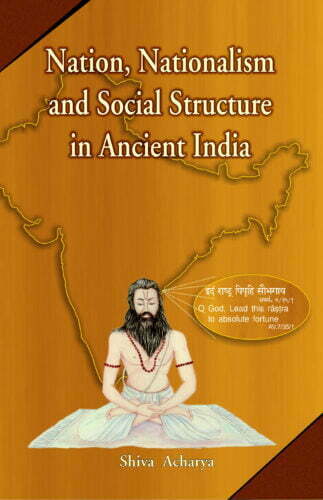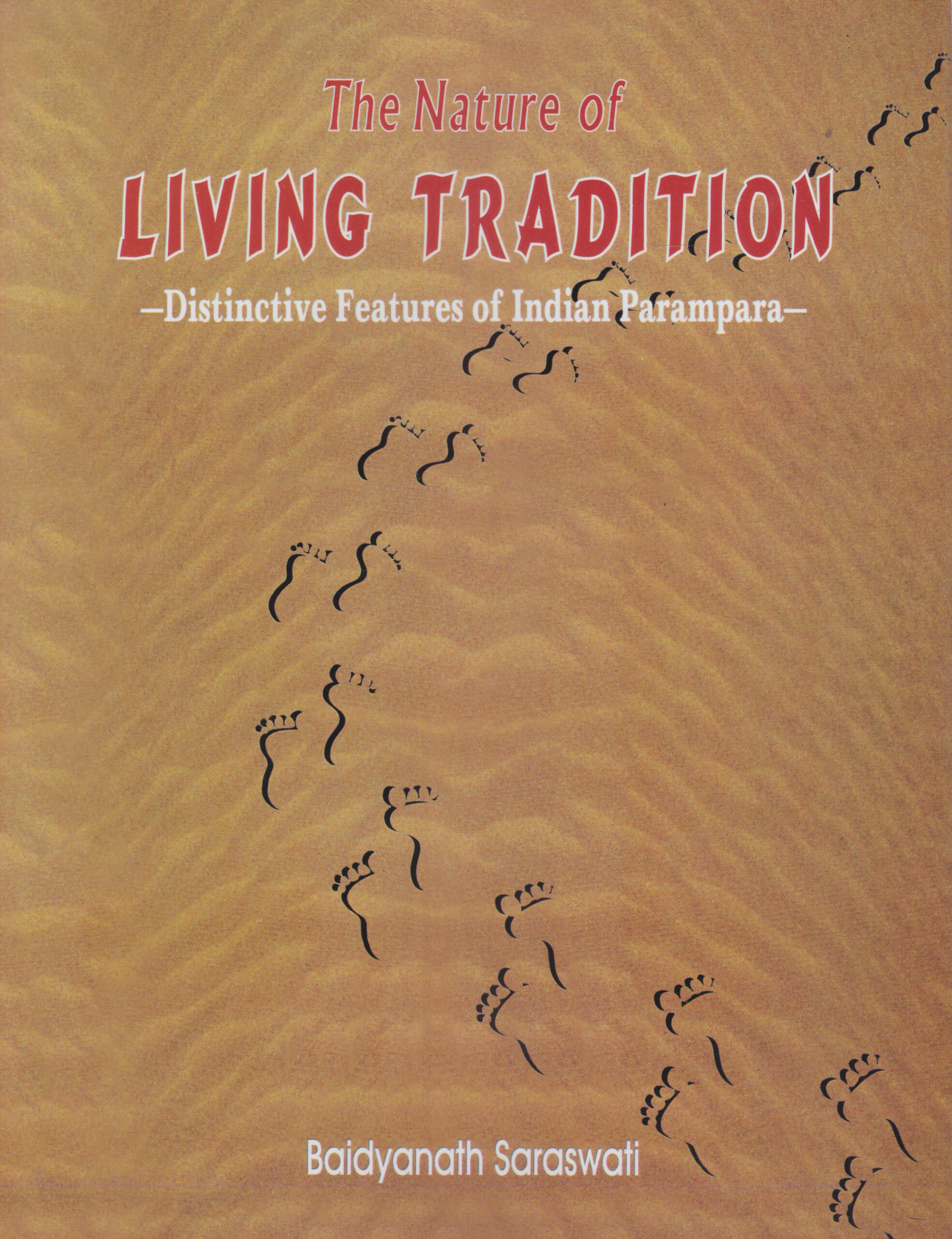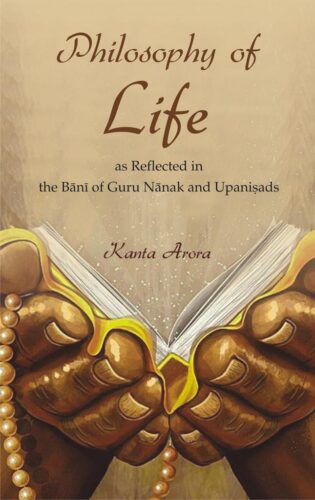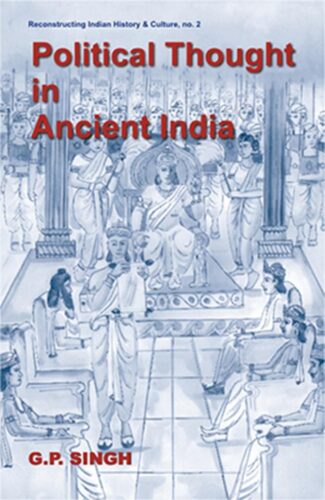Showing 85–96 of 148 results

This book analyses various aspects of Vedic culture, exploring the origin of the concepts of rastra (nation) and rastrabhakti (patriotism). It presents the salient features of nation and nationalism in ancient Indian culture culture- based and not political which helped India to emerge successful.
The concepts of nation and nationalism are generally considered as having their genesis in western modes of thought. However, in this book, Dr. Shiva Acharya attempts to show that the theories of nation and nationalism can be traced to the Vedic era on the basis of a painstaking study of the Vedic culture and civilization. The book analyses the social, political, civil and military, economic, religious and philosophical aspects of the Vedic culture to explore the origin of the concepts of rashtra (nation), motherland and rashtrabhakti (patriotism), parliaments, the notion of all-round development, democratic educational system, equality of peoples and economic growth for prosperity in Vedic times. Citing from the Vedas and other Vedic literature and a host of modern scholarly researches on the subject, it presents the salient features of the nation and nationalism theories as found in ancient Indian culture such as their stress on culture-based nationalism rather than political. It points out that these features have enabled India to continue with its past traditions and culture and emerge as a successful nation in modern times. The volume will prove indispensable to all students and scholars of Indology and general readers as it unravels the immense contributions of ancient Indian thought to ideas and philosophies that hold great sway in modern times.

Scholars reflect on anthropological, philosophical, spiritual, musical, poetical and experiential dimensions to examine diverse questions on Indian parampara its source and transmission, the parent of its primal seed, sustaining the flow of parampara or tradition and whether the individual artist must necessarily confront parampara to sustain creativity.
Indian Parampara is a response to secular Western thought on tradition and modernity. Presented here are contributors from a distinguished group of Indian scholars representing a wide spectrum of disciplines. It raises many questions: What is the source of parampara? How is it transmitted? Does it hold in potential the characteristics of all orders of knowledge? Who was the parent of its primal seed? How does the individual sustain the flow of parampara or tradition? Is the individual artist capable of sustaining creativity and initiating change? Does he have to take the path of confrontation with parampara? How does the person transcend the small I to enlarge himself into the We? What is that experience of the Self where duality between the subject and the object is lost? To answer such central questions the authors of this volume reflect on anthropological, philosophical, spiritual, musical, poetical, and experiential dimensions. This book is an important contribution to traditional thought and culture.

This critical edition of Nitiprakasika, while unveiling Rajaniti and Dhanurvidya, compares it with the Vedic literature and a few medieval comparative texts on polity. It also discusses in detail the weapons and training on them, military organization, battle arrays, types of war, ethics of war, psychology and philosophy of Dhanurvidya among many other aspects.
The experiences and knowledge from our past are recorded in manuscripts which have been handed down to us over several thousand years. The Government of India, through the Department of Culture, took note of the importance of the vast tangible heritage and, in order to preserve and conserve as well as to make access to this wealth easy, established the National Mission for Manuscripts. In order to disseminate the knowledge content of manuscripts, the Mission has taken up several programmes such as lectures, seminars and workshops. The Mission has published the proceedings of the above-said programmes under the following series: Samrakshika (on conservation), Tattvabodha (comprises lectures based on some manuscripts delivered by eminent scholars), Samikshika (research-oriented papers as presented in the seminars), and Kritibodha (transcribed and edited text prepared at advance level manuscriptology workshops conducted by the NMM.
The National Mission for Manuscripts has taken up a project for publishing rare and unpublished manuscripts in three formats (a) Facsimile, (b) Critical edition (illustrated and single copy manuscript), and (c) Critical edition with annotation and translation. This new series has been named as Prakashika. Nitiprakashika critically edited by Dr Urmi Shah comes under this Prakashika series.
Nitiprakashika is a treatise delineating Nitishastra, i.e. Rajaniti and Dhanurvidya scripted by Sage Vaishampayana who learnt it from his guru Veda Vyasa and became the master of its Taittiriya branch, and revealed it to the King Janamejaya.
This critical edition makes a detailed study of Nitisastra and compares it with the Vedic literature, Dharmasastras, Kautilyas Arthasastra, Ramayana, Mahabharata, Dhanurveda Samhitas, Kamandaka Nitisara, Sukra-Nitisara and a few medieval comparative texts on polity along with some regional works on Rajaniti. It also discusses in detail the weapons and training on them, military organization, battle arrays, types of war, ethics of war, psychology and philosophy of Dhanurvidya, and the critical text of Nitisastra with Sitaramas commentary Tattvavivrti in Sanskrit with English translation.
This high-value academic work should entice all who are desirous of knowing about the ancient philosophy on war, warfare and polity, and serve them as a referral book on Rajaniti and Dhanurvidya.

The book in its attempt to study various aspects of the Vedas presents a detailed study of Indian traditionalists on the Vedic literature from Veda VyÀsa to SÀyaõa and other famous ÀcÀryas. While exploring all important commentaries on the Vedas it brings under spotlight the leading Western scholars and modern Indian thinkers and commentators.
With elaborate notes on legends of the Vedas, the book attempts to study various aspects of the Vedas. It presents a detailed study of Indian traditionalists on the Vedic literature, beginning from Veda Vyasa to Sayana and other acaryas including modern saint-scholars. It also views researches of the Western scholars and historians who have critically studied various aspects of the Vedic corpus. It conducts an in-depth exploration of the commentaries on the Vedas, focusing on noted traditional Vedic commentators like Yaska, Jaimini, Kumarila Bhatta, Sayana and Mahidhara as also the modern Indian commentators including Swami Dayananda, S.D. Satavalekar, Sri Aurobindo, Devi Chand, Sriram Sharma and the Western commentators like H.H. Wilson, F. Max Müller, R. Roth, A. Weber, W.D. Whitney, A.B. Keith, and R.T.H. Griffith.
The volume deliberates on definition of the Vedas, division of the Vedas and various shakhas of the five Samhitas as well as a list of Samhitas, Brahmanas, Aranyaka and Upanishad that are extant. It delves into details of the Rigvedic Mandalas and the Yajurveda, Samaveda and Atharvaveda with reference to their subject matter, divisions and even their cultural value. It also examines the phenomenon of oral tradition, especially in conveying the Vedas and secret of preserving the Vedas – Vedic chanting. It has numerous illustrations that include maps, charts and pictures.

The essays capture the changing contours of Orissan society, economy, religions, cultural life and art expressions. It embraces diverse specificities from every epoch of Orissan history and focuses on its archaeological remains, ancient maritime activities, Vaisnavite sculptures, etc.
Lying on Indias eastern coast, Orissa is the legendary old-world Kalinga. Which, conquered by Ashoka, metamorphosed this terrible triumphant emperor into a compassionate, remorse-stricken votary of the Buddhist faith. Today as ever before, Orissa not just has its share in Indias glorious cultural heritage, but epitomizes its architectural marvels and at once fascinating sculptures, including the erotic figurines frozen in stone. And these are best reflected in Orissas profusely sculptured temples, like the Sun-gods at Konark, Lord Jagannaths at Puri, and Lingarajas at Bhubaneshwar; besides the Jaina/Buddhist rock-cut caves of Khandagiri, Udayagiri and Dhauli. This felicitation volume, occasioned by Professor Mishras retirement, in 1997, from the University of Sambalpur, captures the changing contours of Orissas society, economy, religions, cultural life, and art expressions: from the earliest times to almost the present day. In 29 essays, each authored by an area specialist, the volume embraces diverse specificities from every epoch of Orissan history, focussing notably on its prehistoric painted rock shelters, archaeological remains, ancient maritime activities, major and minor religions, Vaisnavite sculptures, stellate temples, development of education and, besides these, its various tribal, revolutionary and socio-religious reform movements during the colonial rule. Professor P.K. Mishra, (born: 19 Jan. 1937), is a distinguished Orissan historiographer, extensively published author, and scholar with wide-ranging specialized interests. Recipient of two prestigious Senior National Fellowships (of ICHR and UGC), he has also surveyed and documented the monuments in Upper Mahanadi Valley on a Ford Foundation Project.

This volume thus provides the psychological context and the relevance of studies of yoga, based on Patanjalis Yogasutra, for advancing the existing psychological knowledge. Yoga psychology provides the foundation for Indian psychology, an emerging discipline rooted in classical Indian tradition, and enables one to experience self-actualization in life.
Patanjalis Yogasutra: A Psychological Study is an attempt at an English translation of Patanjalis Yogasutra with commentary rendered in current psychological idiom. It features an extensive Introduction to the context and attempts to draw out conclusions on the implications of yoga theory and practices to current psychological knowledge.
Yoga paradigm goes well beyond what is currently in vogue and provides a more fruitful model for studying and understanding human nature, both hidden and manifest. This volume thus provides the psychological context and the relevance of studies of yoga for advancing the existing psychological knowledge. Yoga psychology provides the foundation for Indian psychology, an emerging discipline, rooted in classical Indian tradition.
According to Indian psychology, the person is a unique composite of body, mind and consciousness, making a qualitative distinction between mind and consciousness. Self-actualization, the ultimate aim of a person, is realized by cultivating consciousness as-such, resulting in a kind of psycho-spiritual symbiosis, enabling a person to experience an all-around transformation.

Professor Davane offers stimulating perspectives on varied themes covering classical Sanskrit literature, poetics, linguistics, history, mythology and legendary narratives including reinterpretations of the Vedic view of the moon, samudra, dreams, etc.
A distinguished scholar who has had a lifetime engagement with Sanskrit studies: ranging from the Vedic samhitas to contemporary literary criticism, Professor Davane here offers at once insightful, highly stimulating perspectives on diversely varied themes from classical Sanskrit literature, poetics, linguistics, dramaturgy, history, mythology and legendary narratives. And, these apart, brilliant reinterpretations of the Vedic views of the moon, samudra (ocean), dreams and deep sleep. Reviewing the gamut of kavya definitions and its scope, in terms of the literary genres it encompasses, the book critically examines, for the first time, Rajashekharas view of shabdaharana (verbal borrowings), kavisamayas (conventional poetic ideas) in Sahityashastra, and the progression of rasanishpatti in classical Sanskrit literature. It also seeks to gauge Mahamahopadhyaya Dr. P.V. Kanes contribution to Sanskrit poetics rather than his oft-appraised work on Dharmashastra. Dr. Davane marshals an astonishing mass of original literary sources to highlight the all-expansive influence of Kalidasas unparalleled Iyric: Meghaduta, on classical writings, the richness of Banabhattas utprekshas (poetic imagination), the emergence of Sarasvati as a pantheonic deity, and how Sita, the epitome of ideal womanhood, has been varyingly portrayed by over twenty Sanskrit playwrights. Also shown, in addition, are the legends/myths about Samudra-manthana, Amritamanthan, Rahu-Ketu, Udayana, and Dhanvantari, in their altogether fresh perspectives. This composition of Prof. Davanes writings is an essential reading for the scholars/researchers of Vedic and Classical Sanskrit literature.
The problem of explanatory gap in the phenomenal consciousness has risen in the Western philosophy mainly because the consciousness itself and its manifestations or reflections are treated separately. Whereas, according to the Vedanta school of India, the phenomenal consciousness is merely manifestations of self-consciousness which is embodied in the human beings. In this approach, the phenomenal consciousness and self-consciousness are one and the same thing because the former depends upon the latter. Hence, there is no explanatory gap in the phenomenal consciousness. Similar is the case with the mind–body problem which exists in the Western philosophy mainly because the mind is treated as synonymous with consciousness.
This book solves the above problems on the basis of the Indian philosophy and existential philosophy of Jean-Paul Sartre. In both the philosophies, there is no explanatory gap in the phenomenal consciousness and the mind–body problem.v

It is an attempt to describe and address violence as it manifests in public life. There is violence in all the three spheres of human functioning — thought, action, and passion. With person-based violence, there are group violence, identity conflicts, and violence against nature as well.
Phenomenology of Violence describes violence as it manifests in public life. There is very little written on violence that disturbs peace. Violence, per se, is more than physical abuse and it spreads across different realms. Aggression, casteism, child exploitation, coercion, drug abuse, ethnic and religious violence, gender discrimination, naxalism, sexual abuse, suicide, and terrorism are some of the manifestations of violence. Violence occurs in all the three spheres of human functioning — thought, action, and passion.
Violence is a part of mans nature and is grounded in his animal origins. Going by Mahatma Gandhi, man is a composite of brute and human elements. Violence is not merely person-based. In addition, we have group violence, identity conflicts, and excesses against nature as well. Violence is involved in all acts of hate and selfishness, whereas nonviolence is grounded in love and altruism.
This volume addresses varied aspects of violence: its causes, nature, and solutions. Luminaries such as Albert Schweitzer, Bertrand Russell, Mahatma Gandhi, Martin Luther King Jr, and Nelson Mandela were some of the prominent protagonists of peace, who denounced aggression, discrimination, violence and war.
At a time of religio-political violence across the globe along with other forms of violence, this volume gives out the message that until we bring about peace in our life, both internal and external, we cannot overcome violence and that the ultimate recourse to peace is nonviolence.
Vol. 1. ISBN: 9788124609095
Vol. 2. ISNB: 9788124609101

This volume illustrates, compares and discusses as to how Guru Nanak with his transcendental exposition, sharp skill, argumentative capability and common poetic language further enriched, explained, simplified, modernized and expressed various theological and philosophical concepts elucidated in Upanishads for the understanding and adaptation of a common man.
This volume illustrates, compares and discusses as to how Guru Nanak with his transcendental exposition, sharp skill, argumentative capability and common poetic language further enriched, explained, simplified, modernized and expressed various theological and philosophical concepts elucidated in Upanishads for the understanding and adaptation of a common man. Upanishads are breath of eternal and hymns of Guru Nanak are a divine song of life. Guru Nanaks exuberance of love and search for God and godly people was not confined to any religion or religious institution. He revolted against the ritualistic mind of a brahmana. He was essentially a man of God whose love and quest for search for the Ultimate Truth knew no limits. In the pursuit of this search he enjoyed a reach to the state of void meaning a state where there is no distinction between the object and the subject the knower and the known. He was a protagonist of Bhakti tradition and stressed more on bhakti or devotion to God. He taught the Sahaja-Patha or Surata Shabada Yoga that easily takes one straight to the Lord by spontaneous concentration of mind.
Both hymns of Guru Nanak and Upanishads explain that the real aim of human life is to attain liberation from the repeated coming and going in incarnations, which can be attained by adequate karma, knowledge and disciplined meditation.

Using case studies from pilgimages around the world undertaken by the devout, the volume explores the ways many of the pilgrimage traditions have started and evolved. The book deals with pilgrimages not only in India but also in several countries abroad.
Pilgrimage involves movement of people, either as individuals or as members of a group, in search of the sacred. Spontaneous behaviour, miraculous events, and/or ecstatic visions of individual pilgrims have often resulted in complexity in ritual, meaning, and movement. Pilgrimages may start with individual ecstatic visions, unusual strange unworldly experiences, which are the experiences of ordinary people, certainly not of priests or politicians. Often they are uniquely human experiences which embarrass ecclesiastical authorities.
As a pilgrimage tradition evolves, sacred sites may become formalized in organized socio-political systems with economic overtone. Even in these structured situations, individual people may still have powerful individual experiences. Eventually a pilgrimage tradition may be taken over by religious and political authorities, lose spontaneity, and become frozen in time. But even in these situations, in which large numbers of people may gather, there is a tremendous amount of primal energy in which innovations and visions may be evoked.
Using case studies from pilgrimages around the world, the volume explores the ways many of these traditions have started and evolved. A common perspective is that of self-organization of complex structures in space and time.
The variety of pilgrimage described in the book is remarkable. The subcontinent of India is the location of many sites such as the temples to the nine planets in Tamil Nadu, the pilgrimage circuits of Varanasi, early Buddhist pilgrimages in Sanchi and Bodh-Gaya, the great ruined city of Vijayanagara, those associated with the Ramayana, and the death ceremonies at Gaya. Beyond India, the self-organization and stability of pilgrimage systems are analysed for pilgrimages in Nepal (Kathmandu), Japan, Mexico, the Caribbean, Peru, Norway, and the US.

Professor G.P. Singh tries to crystallize the political thought-processes accompanying the evolution of state in the bygone centuries. He dwells on the time-honoured components of the Saptanga theory and their role in supporting the state.
Ancient Indians were a highly organized polity, with a well-established worldview of the Rajya (the State). And also of its seven distinct organs: svamin (the king), amatyas (the ministers), janapada/rashtra (the territory and the people), durgas/pura (the forts/capital), kosha (the treasury), danda/bala (the army), and mitra tatha niti (the allies and inter-state relations). In their togetherness, these components of the state led political ideologues to advance the Theory of Saptanga : the seven limbs each of which admitted varying emphases with ancient scholars, according to the changing political situations or their own predilections. Besides traditional/semi-historical writings, the Saptanga Theory of State finds recurring allusions in Kautilyas Arthashastra which, written sometime about the fourth century BC, remains the oldest surviving treatise of its kind on statecraft. Surprisingly, the Arthashastra itself, claims its author, is a compendium of the writings of as many as eighteen ancient teachers, like Manu, Brihaspati, Ushana, Bharadvaja, Vishalaksha, Prachetas, and Pishuna. With bit-by-bit analysis of an astonishing mass of original, indigenous sources: Vedic, puranic, epical, Buddhist, Jaina, and even non-Indian, Professor G.P. Singh tries to crystallize the political thought processes accompanying the evolution of state through the bygone centuries. Bringing fresh insights into the Saptanga Theory, his study dwells, at length, on all its seven time-honoured components and their variegated roles in lending support to the state. Also underscored here is the relevance of ancient Indian view to modern theories of politics and diplomacy. A thoroughly documented work of equal utility to scholars and students, the monograph is supplemented by a comprehensive index and a glossary of non-English words/ phrases used in the text.
| There are no products |